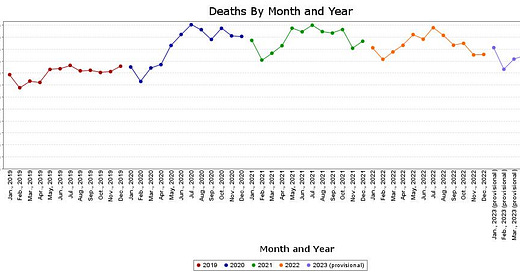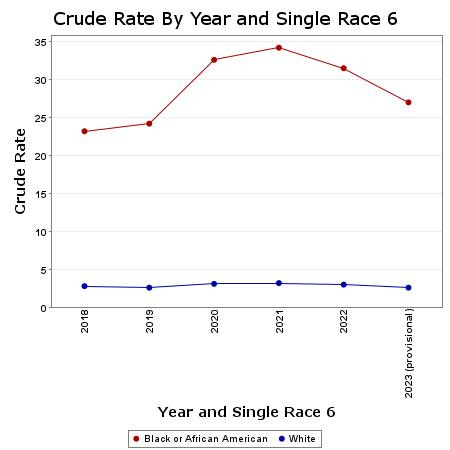It’s been far too long since I’ve posted here! But this morning I did one of my occasional checks on the nation’s homicide rate—the most up-to-date measure of which is “provisional” CDC data, which now look reasonably complete through about fall of 2023. These numbers are as good an opportunity as any to break the dry spell.
Here’s the gist of it, as depicted through the CDC’s own tool. The tool provides counts rather than rates when you go month-by-month, but the population only changed a couple percent between 2019 and 2023.
If you carefully compare year-over-year to take account of seasonal trends, you see that 2020 got off to a slightly worse start than 2019 … and then things got a bit worse in March and April with the pandemic … and then things got really bad with the unrest of the summer, a trend break you don’t exactly need to squint to see. Things stayed so bad into 2021 that it actually had more homicides than 2020 did.
Since then, it’s been an unfortunately gradual improvement. The CDC already counts more homicides in 2023 than it did for 2019, despite the 2023 data being incomplete. December 2023’s count is currently just 506 and will probably rise by more than 1,000. (Even 2019 had about 1,700 December homicides in the final data.)
In my writing on these trends I’ve often stressed the large disparities in homicide rates across demography and geography—and that fluctuations in trends tend to have their biggest impact on the groups who were already the most affected. With that in mind, here are the rates per 100,000 for whites and blacks (both restricted to non-Hispanics); remember that the 2023 numbers will go up a bit before the data are finalized.
Homicide is down since 2020 and 2021. That is good. But it’s still not where it was in 2019, and the spike has cost thousands of lives.





